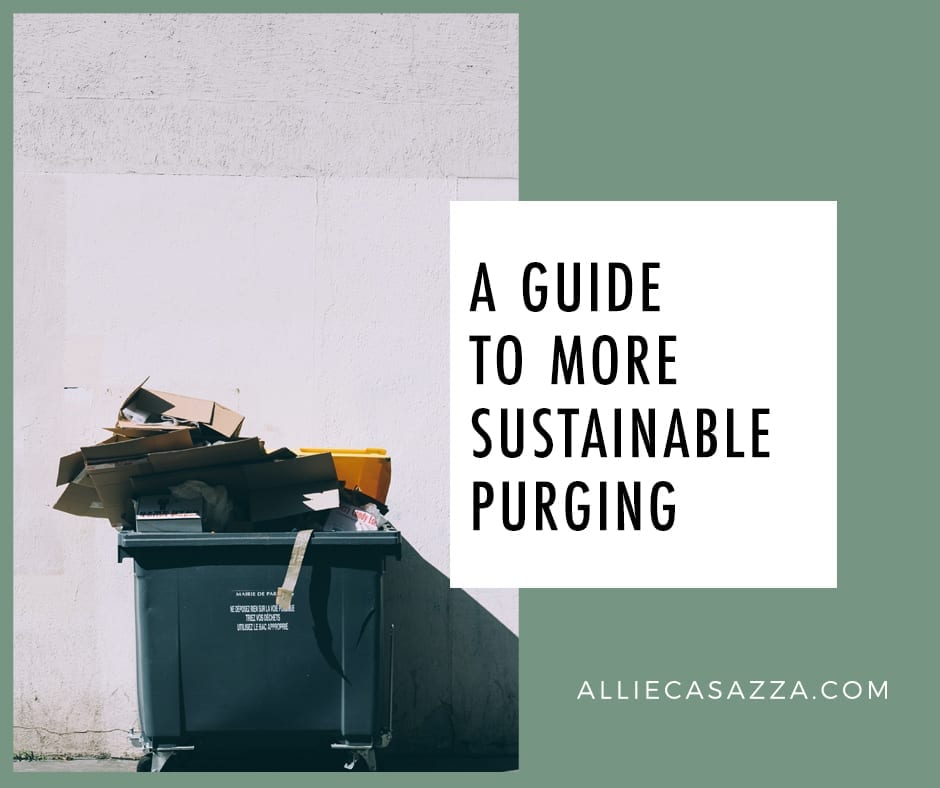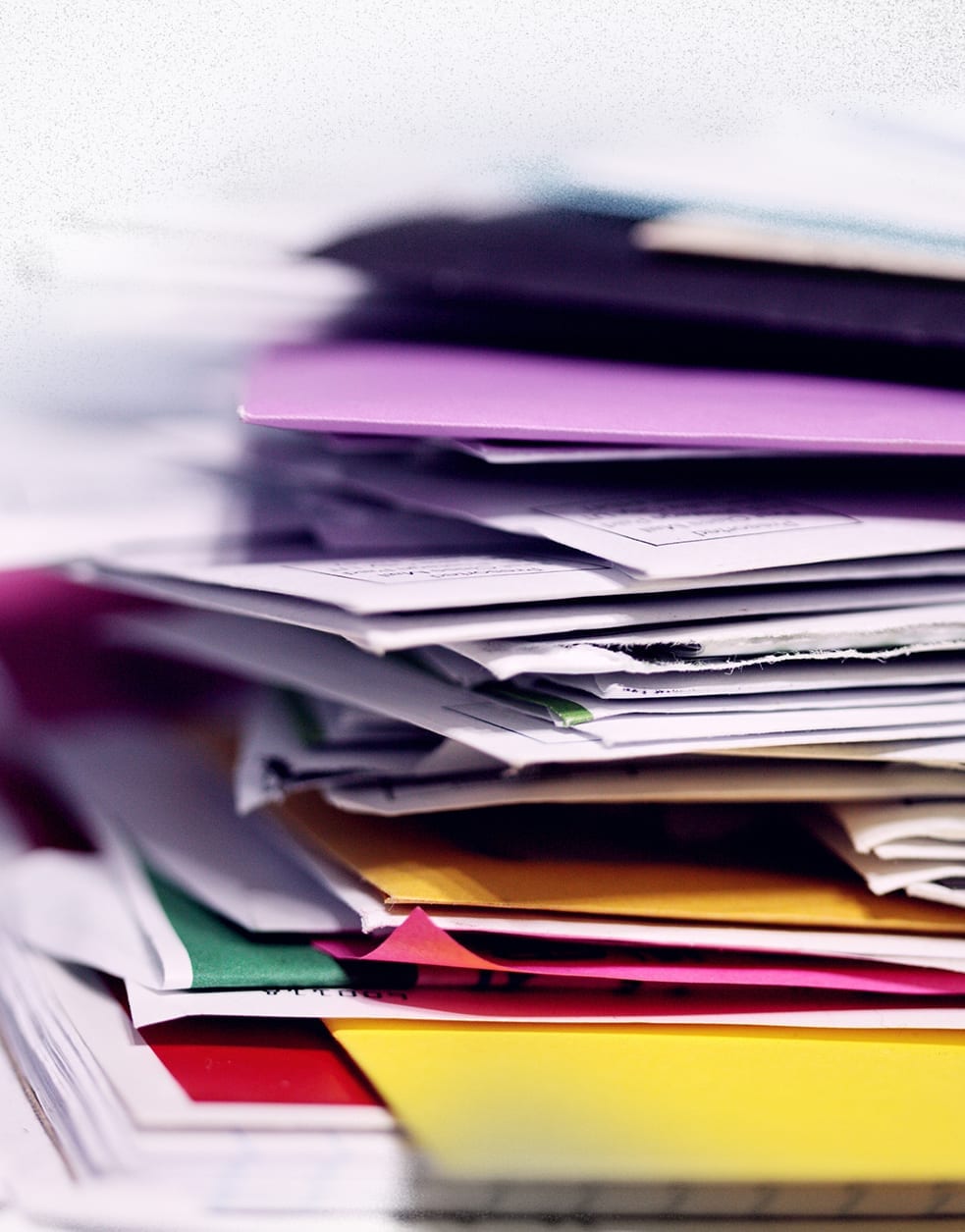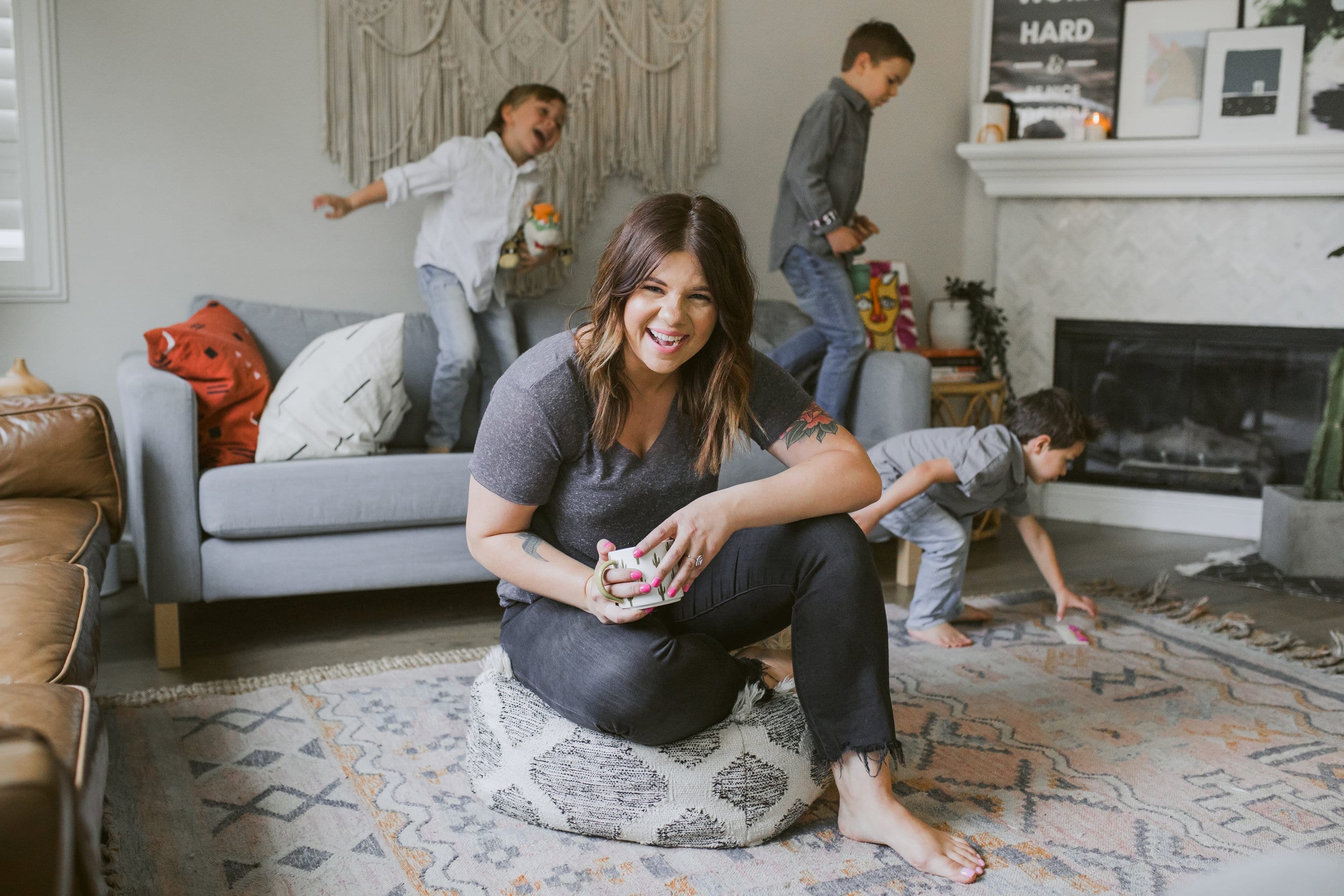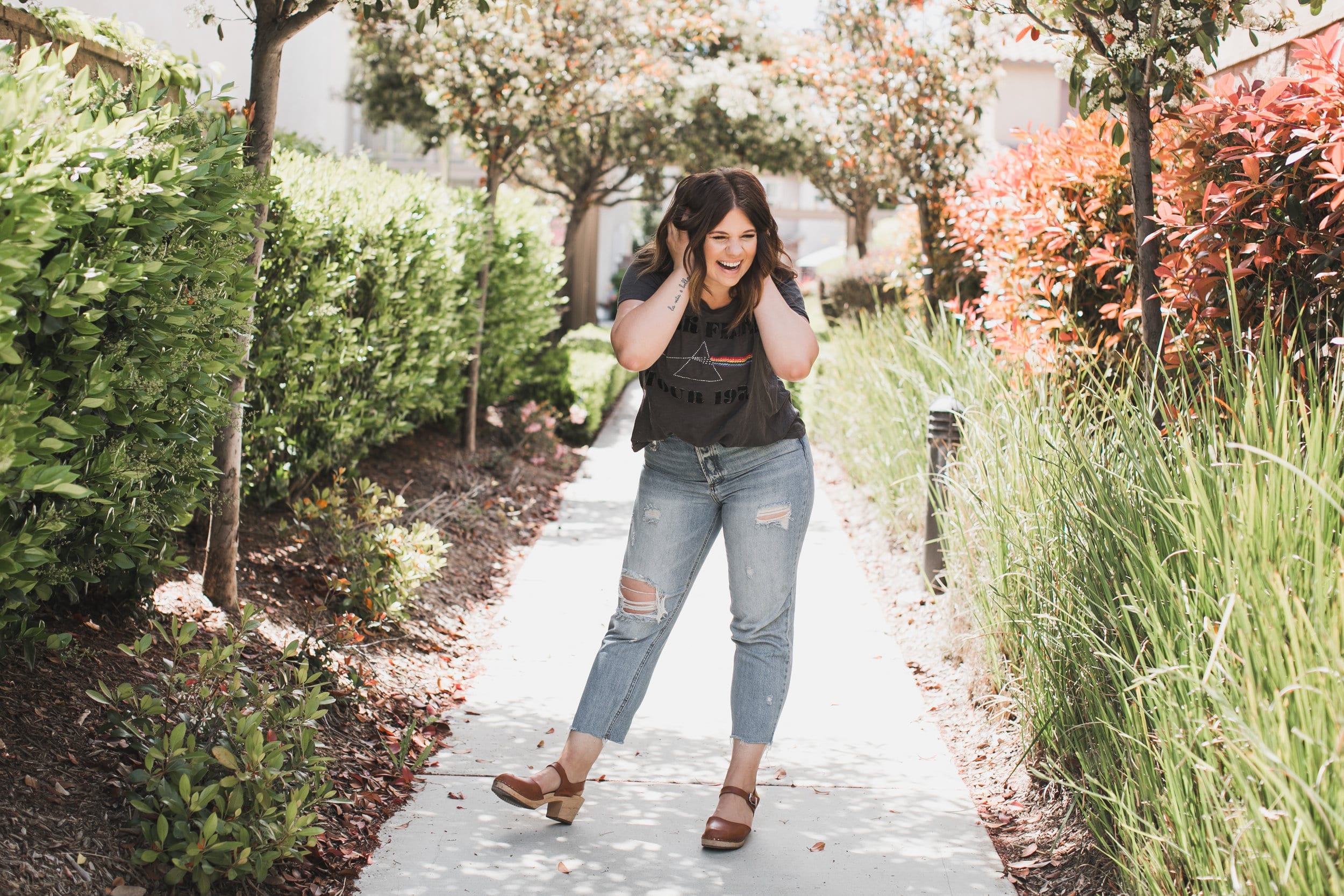

A guest post from Kat Steck of The Junkyard Journals
I participated in Declutter Like a Mother last year and was so excited to be purging a bunch of unneeded stuff and freeing up much needed space in my life and home. However, when I had bagged it all up two things really struck me.
First, how the heck did all this crap end up here in the first place? Second, all of this has to go away… but what does “away” actually mean?
Addressing my tendencies to accumulate more is something I know I will be working on for the rest of my life. Allie is an amazing support in this, but she will say too that there’s no quick cure-all… you have to do the work!
Some things that have helped curb my overconsumption are:
knowing where my worth truly lies (not in stuff)
practicing gratitude
addressing stressors and anxiety
awareness of the way I am being targeted as a consumer
learning more about the environmental and human rights impacts of fast fashion and consumerism
avoiding trigger stores
shopping less
finding alternate hobbies
making and sticking to lists
deleting shopping apps
waiting 24 hours before making a purchase
budgeting
setting boundaries
opening up communication with family members
If you’ve committed to never returning to this place of overwhelm and overload, you still have to deal with getting out from under it in a responsible way. Of course some things on this decluttering journey are destined for the trash can- old makeup can fester bacteria, no one wants your stained underwear, and those candy wrappers under the bed – they’ve met their fate.
Most of the other things that we are boxing up need to be given a second thought, especially before trashing them and even before donating them.
Did you know that thrift stores only sell about 1/3 of the stuff that gets put out on shelves?* The rest makes its way through secondhand outlets, gets shipped overseas and ultimately is sent to a landfill or burned.
In the past, I had always felt good about donating things to the thrift store, in a way it almost made my overconsumption feel charitable. Through researching it a little more, I have decided to take a step back and reevaluate.
Now, I try some steps to get the items to someone in my community before hitting up my thrift store donation line. This way the life of the item is extended before being sent to a thrift store and at some point a landfill or incinerator. It’s not a perfect system, but it is definitely doable.
My two favorite places to get rid of unwanted items are on my local Buy Nothing group (find yours here) and Facebook Marketplace / Buy-Sell-Trade groups. I take and post pictures as I am putting them in the donation box. To move items faster, bundling like items can be really helpful.
For example, I will post a group of books and say “free,” “must take all” and “priority to first pick up.” This has proved to make people show up in a timely manner and ensure items leave my house quickly which is crucial when you are really trying to keep up the momentum of decluttering.
Since joining a Buy Nothing group a few months ago, I have successfully purged unwanted Christmas gifts (sorry thoughtful relatives! It’s the thought that counts!), open self-tanner,, sealed makeup samples, extra mirrors, plates, electronics, mugs, plastic planter pots, vitamins, cocktail mixers, baby toys, books, plastic silverware, a rocking chair, and so much more.
When someone is interested in an item I posted, I message my address and literally leave it on my porch for them. I keep a box for trash, donation, and pending free items that have already been photographed and posted.
I do occasionally sell an item, but I will set myself some strict guidelines regarding how long I will wait and what the item has to be worth to be worth in relation to my time and space in my home (Allie always suggests 3 days). Oftentimes, I opt to give it away for free instead. Remember, as Allie says, your money was wasted when you bought the item, not when you gave it away.
Other places to check in with before donating to the thrift store are animal shelters (towels, bedding, plastic bags), food pantries (non perishable food and toiletry items), schools and churches (toys, art supplies, and books), women’s shelters (women’s and baby clothes, sometimes toys/books) and homeless shelters (seasonal clothing like coats, sweaters, and mittens). Always make sure to give these organizations a call first to assess their needs and to avoid dumping unwanted items for them to have to sort and donate.
While the main objective of this article is to provide you with options to declutter in sustainable ways, please know that I love thrift stores! They do wonderful work for our planet and many provide charitable donations and job training. Thrift stores are a great place to donate and to get needed items in the first place.
However, thrift stores get an overwhelming amount of donations and cannot sell and/or process it all, checking the options above first may get the items in use for longer and into hands in your community that can use them.
Taking a step back when you are decluttering to think about the afterlife of your items can extend their usability before ending up in landfills.
The most important part of the decluttering process is not just reinventing our space but reinventing our mindset, challenging old habits, and confronting our consumerism head on so that we can live more peacefully and freely in this new chapter.
Here’s to a fresh start! Happy decluttering, mamas!
Kat Steck
The Junkyard Journals


You can find me on Instagram where I share more about donating, shopping secondhand, and making simple, earth & budget friendly swaps for families.











+ show Comments
- Hide Comments
add a comment